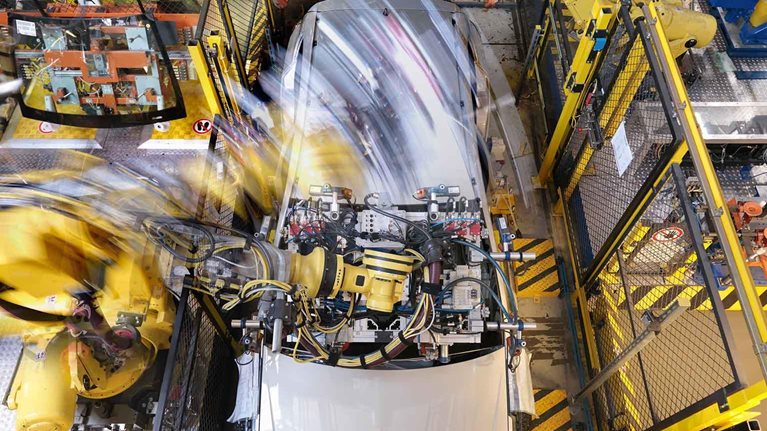The fundamentals of making products remain the same now as ever. First, create something of sufficient value that customers are willing to pay for at a price higher than the cost of production. Next, keep pushing that cost lower while preserving—or, better still, increasing—value for customers. Rinse and repeat.
Stay current on your favorite topics
Much easier said than done, of course, especially over time. Companies may misunderstand what customers value, so that a highly refined, high-quality offering finds too few customers to become an economic success. Or the offering may be exactly what customers want, but the company fails to deliver it at the right time or in the right way.
Avoiding these outcomes is a principle reason companies hire leaders and managers, and invest in transforming themselves according to continuous improvement disciplines. Those remain the same as ever, too, although our understanding of how they work has deepened. There are the technical systems that help work get done: the end-to-end process diagnostics, workload-allocation systems, and total-quality measurements. Management infrastructure ensures that leaders spend time seeing the work get done, that performance is constantly assessed and acted on, and that problems get raised and addressed. And finally, there are the mind-sets and behaviors, and the cycles of coaching, capability building, and feedback that help people get better at what they do.
So the song is the same. Unfortunately, so is the ending, with a key change from major to minor as initial optimism fades to disappointment. In a 2015 survey, only 26 percent of executives characterized their organization’s most recent transformation as successful.1 That’s actually a decrease from the famous “three in ten transformations fail” finding that Harvard Business School professor John Kotter (now retired) published more than 20 years ago.2
What has changed? The tempo. New technologies, new customer expectations, and new sources of competition—often from players that didn’t exist five or even three years ago, and that follow entirely new business models—together are leaving companies with less and less time to react. Not only must they change but they must also do so quicker, faster, deeper, and with much greater odds of success.
The pace of change has quickened
Manufacturers are used to change: the survivors have transformed themselves time and again. They adapted to surging demand as economies boomed. They adopted production innovations such as lean management. They built new, global networks to take advantage of economies of scale and scope.
But those changes took years—sometimes a full generation—to take hold. Digital technologies won’t allow that luxury. Think of the contrast between an automobile platform, whose basic mechanics may remain essentially the same for decades, with a mobile-phone operating system, which changes every few months, if not weeks.
Would you like to learn more about our Operations Practice?
That’s the pace Tesla is now nearing with its vehicles, whose software updates bring new features several times a year. And that evolution represents only a small part of the new digital landscape that is disrupting value chains everywhere. Even where the competition is not yet visible, technology is changing customer expectations so quickly that high performers have a hard time keeping up.
Manufacturers are therefore having to rethink almost every aspect of the way they do business: from what customers want and how offerings should be designed to where components should be sourced, which manufacturing methodologies should be used, and how products should be sold and serviced. It’s as if all of the changes they previously made are all happening again—and at the same time. And they must do so under enormous scrutiny, with activist shareholders demanding dramatic action and proving perfectly willing to bring in new leadership in order to get it.
What must change about change
Manufacturers must bring everything they know about transformation to bear, and then some, given that historically so few transformations have succeeded. They must begin by understanding why the traditional approaches have fallen short.
Our work with clients highlights three main problems. The first is a tendency to focus on the tools that support change, rather than on the core disciplines that the tools are designed to reinforce. The second gap centers on leadership, which too often proves inadequate to support the demands that transformation requires. And the third—and likely most important—reason is that transformations are too often thought of as projects with a clear timeline, including a beginning and an end.
In other words, transformations fail because leaders and managers misunderstand what “continuous improvement” truly means. It means that the improvement cycle never ends and instead becomes core to the way the company operates.
What a different approach looks like
The alternative comprises four major components. It starts with high aspirations, with an emphasis on quantifiable ideas that can be sized with some degree of confidence and that affect the bottom line quickly. Next, a rigorous process governs all of the initiatives and projects that come together in transformation. The third requirement is tighter alignment, both among the leaders in setting the organization’s direction and between the leaders and the rest of the organization, who must see that direction turn into tangible goals they can work toward. Finally, there’s the question of speed. Once an idea is sized and the risks assessed at a high level, the bias must be toward piloting quickly and making rapid adjustments as needed, rather than holding out for perfection.
No mountain high enough: Aspirations to give inspiration
Few transformations achieve more than the goals their leaders set—especially in a typical risk-averse business context. That’s why high initial ambitions are so crucial. The instinct among leaders and managers to underpromise and overdeliver is so strong that only the strongest signals from the top can overcome them.
Moreover, there’s the practical reality that fulfilling high goals is really difficult, typically requiring leaders to shepherd hundreds, or even thousands, of initiatives through to completion. Nevertheless, the experiences of several organizations show that it’s possible, provided leaders plan for serious attrition rates. A recent analysis of high-stakes transformations3 found that on average, initiatives lost about 70 percent of their value between the initial idea stage and final tallying of the benefits. Accordingly, in order to reach a given target, a company will need a set of initiatives whose estimated value is at least three times the target amount.
That may not be possible at the very start. Instead, leaders will likely need to plan to “go back to the well” periodically to find additional opportunities. The consumer-products company, for example, set a goal of almost half a billion dollars in savings, and had to go back to the well several times in the first year to meet its goal successfully.
Rock steady: Rigorous structure for continuous improvement
Of course, meeting an initial target—even an aggressive one—is only “improvement.” As important as that is, over time, what matters even more, is continuous.” That takes rigor, a combination of processes and tools that constantly reinforce a culture that seeks out ways to get better.
Some of this infrastructure is built as the organization progresses toward its initial goal. A survey of executives4 published in 2015 asked about 24 practical actions that support organizational transformation, ranging from open communication by senior managers about the transformation’s progress to capability-building programs for employees. The crucial finding was that the more actions an organization took, the better its odds of success in its transformation (Exhibit 1).

More specifically, the organizations that succeeded in transforming themselves were those that planned in advance for continuous improvement. At these organizations, employees understood how their work related to the organization’s overall vision, everyone was actively engaged in identifying errors and defects, best practices were systematically shared and improved upon, the organization actively developed its people, and everyone was fully engaged in meeting targets (Exhibit 2).

But once the most intensive period of transformation is complete, progress may start to erode. Often the proverbial low-hanging fruit have been gathered, meaning that further improvement opportunities are harder to see and to achieve. Leaders may be tempted to reclaim time for problem solving, coaching, or best-practice codification to meet short-term goals. The unintended message: the changes we made were only temporary. Now things are getting back to normal. Before long, so does the organization’s performance—to its pretransformation levels, or even lower.
Avoiding this vicious circle requires organizations to adhere to several interlocking disciplines. At a large state-owned enterprise, for example, performance metrics now focus not only on what people achieve but also on how—meaning how well they adhere to the organization’s new way of working. Achieving good numbers the wrong way is not a career-building move.

The great re-make: Manufacturing for modern times
This 21-article compendium gives practical insights for manufacturing leaders looking to keep a step ahead of today’s disruptions.
Other organizations, such as a food manufacturer with more than 100,000 employees, have adopted easy-to-use tablet-based tools that guide leaders and managers through their workdays, so that they can analyze data to ask good questions at morning huddles and make sure to complete their process-confirmation meetings in the afternoon. And a financial institution’s senior executive sends video updates to all employees sharing his calendar and celebrating when people eliminate resource-wasting meetings.
Everyday people: Align, energize, and upgrade leadership capacity
The 2015 survey confirmed what many leaders intuit: a transformation must center its efforts on helping people change. For example, communication is critical. Transformations where senior leaders communicate openly about progress, success, and implications for individuals in their day-to-day work were between roughly four and eight times as likely to succeed as transformations where there was little or no communication (Exhibit 3).

Accordingly, the role of the leader is crucial, and not just for official communication. What leaders do in their day-to-day work lives matters at least as much: for example, role modeling expected behaviors, demonstrating commitment to developing their teams, and even simply spending sufficient time on the transformation all had a major impact toward success (Exhibit 4).

On the other hand, leaders must be more than simply visible. A 2016 survey of more than 1,600 transformation participants found that even in failed transformations, more than half of CEOs were very or at least somewhat engaged—suggesting that the CEO’s role is necessary but not sufficient.5 It turned out that that an even more critical differentiator than the engagement of the CEO in a transformation was the engagement of the front line. In successful transformations, 73 percent of respondents reported visibly engaged frontline employees, compared with just 46 percent in failed transformations. Engaging the front line is notoriously difficult, though, and it shows: of all respondents, frontline employees and line managers were the least likely to report transformation success (Exhibit 5).

Signed, sealed, delivered: Balance speed and discipline
Keeping up the pace is an essential element of the successful high-stakes transformations6 studied earlier this year. Leaders maintained an aggressive pace of weekly reviews so they could oversee progress. Each initiative passed through a series of well-defined stage gates, with implementation keyed to a schedule of milestone reviews. Finding the right balance of setting milestones was essential: too many risked micromanaging initiative owners, who would spend too much time preparing for milestone assessments; too few, however, meant owners might not reveal problems until it was too late for leaders to provide support.
The happy medium took advantage of the weekly meeting cadence. Even between milestone reviews, every initiative was expected to make at least some progress each week, which the owner would report on briefly at the meeting. That encouraged owners to discuss signs of potential problems when they were still happening early enough to be fixed relatively easily.
In the end, the winners will be those who are able to adapt their technical systems to changing consumer demands, leverage their management infrastructure to drive both top-down and bottom-up innovation and mobilize their work force around common business objectives.


